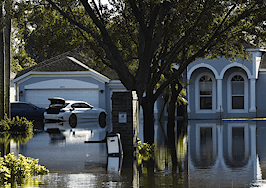No one can predict the future of real estate, but you can prepare. Find out what to prepare for and pick up the tools you’ll need at Virtual Inman Connect on Nov. 1-2, 2023. And don’t miss Inman Connect New York on Jan. 23-25, 2024, where AI, capital and more will be center stage. Bet big on the future and join us at Connect.
The U.S. housing market hasn’t reached apocalyptic levels yet, but Redfin is cribbing a few survival skills from the Rambo film franchise, CEO Glenn Kelman said in an appearance Tuesday on CNBC’s Squawk on the Street.
“[The state of the market has] been a slow-building disaster, so I don’t think it feels more apocalyptic now than it did four months ago,” Kelman told the show’s hosts, Sara Eisen and Carl Quintanilla. “The housing market is just taking a beating because affordability is at a four-decade low. So at some point we just need to catch a break from the Federal Reserve and that doesn’t seem likely to happen in 2023.”
As 30-year fixed mortgage rates have hit 7.51 percent, the market has slowed significantly because many potential buyers and sellers alike are unwilling to swallow those higher rates after pandemic years that saw historically low rates, as low as the 2 percentage range.
“It has certainly depressed employment in the real estate sector, but it hasn’t hurt prices,” Kelman said.
High home prices and mortgage rates have created a “sales volume cramp” that will likely last a long time, Kelman added.
Moves out of necessity, for life events like marriage, the birth of children, death, etc. are still happening, of course, Kelman explained, but those types of moves are only barely sustaining the market at a rate of about 4 million annual home sales.
“If you look at the number of existing home sales in the United States, it goes between 4 [million] and 6 million,” Kelman said. “During the pandemic, it actually went to a 6.5 billion annualized rate, nearly 7, but it’s never gone below 4 [million] since we’ve been tracking it and the population is about 10 percent larger than the last time we hit that low, which was in 2008. So we are now at the most basic level of Maslow’s Hierarchy, where shelter is a basic human need, [and] the only people moving are the ones that absolutely have to …
“I wouldn’t call that a ‘Goldilocks scenario.’ I would call that rock bottom,” Kelman continued. “But that’s where we are right now and the only relief is that it can’t go much lower.”
In this type of market, there’s no long-term business planning for the future, Kelman told Squawk on the Street.
“Remember when Rambo was asked, ‘Rambo, how would you live?’ and he says, ‘Day by day’? That’s how we’re planning this business,” Kelman said. “You can’t look three, six, nine months out. What we face right now is 7.5 percent mortgages, 4 million annualized home sales rate. We’re living in the now. And if things get better, that will all be upside in the business.”
When asked if Redfin could continue to create a profit in such a market, Kelman said yes, the business could — but not without some tightening of the belt.
“We can, we just have to reduce our costs,” the CEO said. “So what we’ve done is cut non-core businesses, laid off some people — which I still feel ashamed about — but it’s put us in a position where, as we take market share, we can build a profitable business. But there’s no free lunch here; we have to take someone else’s lunch to be able to grow, because we are in a shrinking market and we feel poised to take a significant share of the next six to nine months.”
In April, Redfin announced its third round of layoffs since the market began to shift in 2022 as mortgage rates started climbing.













